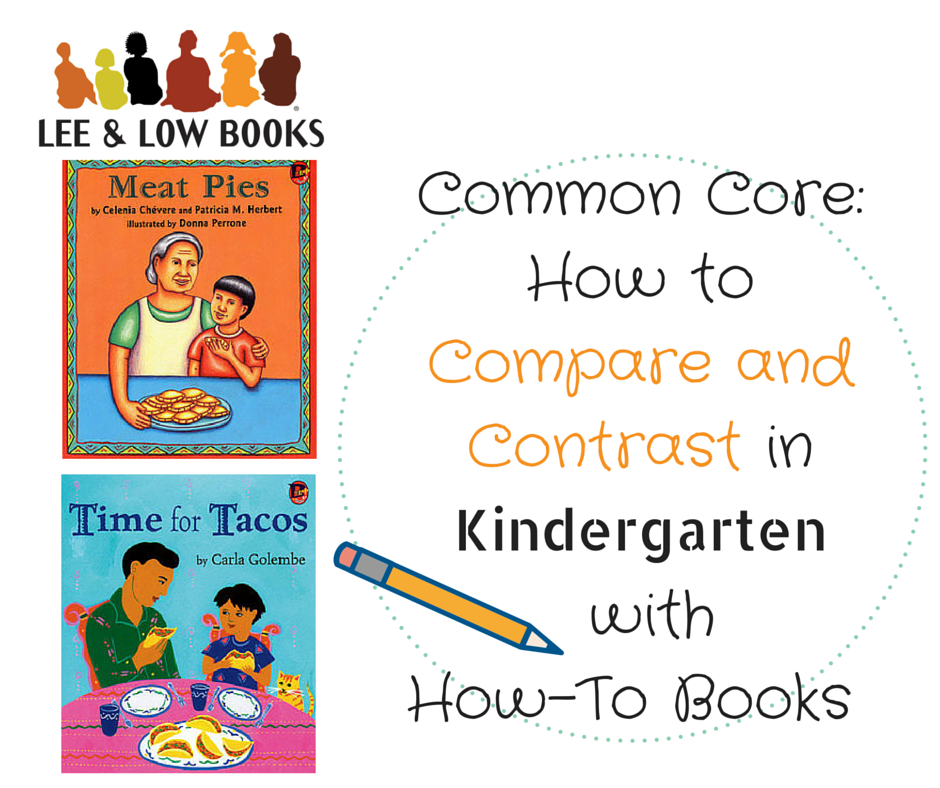February is almost upon us! At Lee & Low, we believe that Black history is American history and should be celebrated and taught all year long. But February can be a great time to shine a spotlight on favorite books or freshen up a dated collection with new titles. Here are eight of our favorite Black History Month Books for kindergarten through second grade: Continue reading
Tag Archives: kindergarten
How to Compare and Contrast with the Common Core in Kindergarten
 Over the past several weeks, I have demonstrated what compare and contrast can look like in second and third grade. Even as young as kindergarten, early readers can learn to compare and contrast successfully within and between texts. In doing so, teachers can assess students’ abilities at close reading, comprehension, and interpretation.
Over the past several weeks, I have demonstrated what compare and contrast can look like in second and third grade. Even as young as kindergarten, early readers can learn to compare and contrast successfully within and between texts. In doing so, teachers can assess students’ abilities at close reading, comprehension, and interpretation.
Below is a comparison of two books of similar topic and genre. I have created sample questions to teach towards and check mastery of each of the three Common Core categories. These are by no means the only questions to ask in each category, but these provide an overview of the progression in question complexity and mastery of the texts.
By creating a range of compare and contrast questions across the standards, we are able to differentiate for students within a class, provide extension opportunities for ready learners, or move the whole class from literal- to higher-level thinking over the course of several lessons.
Texts:

Meat Pies (Level: A)
Integrating Reading, Writing, Speaking & Listening in Grades K-1

![]() Katherine Ali is a dual-certified elementary and special education teacher. She recently graduated as a literacy specialist with a Masters in Science from Manhattanville College. She has experience teaching internationally in northern China and now teaches in the Bronx, NY.
Katherine Ali is a dual-certified elementary and special education teacher. She recently graduated as a literacy specialist with a Masters in Science from Manhattanville College. She has experience teaching internationally in northern China and now teaches in the Bronx, NY.
As educators, we witness the transformations of students throughout elementary school. First graders will one day become fifth graders, while fifth graders were once first graders. So we must think, where did our students come from? and where are they going next? Our classroom must be structured to prepare our students for the future and help them build a skillset they can bring with them. In order to be active participants in the literate world, students must be reading, writing, speaking, and listening at all ages.
Here on the LEE & LOW blog, I’ll illustrate what it looks like to integrate reading, writing, speaking, and listening across several grade levels: K-1, 2-3, and 4-5. The natural interplay of language looks slightly different across grade levels, but the foundations and mission are the same.
Reading: Text Complexity and the growth of comprehension
We want our students to ascend the staircase of text complexity and simultaneously sharpen their comprehension skills. Students of all ages need to build stamina through independently reading more rigorous and complex texts. Additionally, read-alouds allow students to access content and concepts they may not be able to decode themselves.
What does close reading look like in Kindergarten?
Jaclyn DeForge, our Resident Literacy Expert, began her career teaching first and second grade in the South Bronx, and went on to become a literacy coach and earn her Masters of Science in Teaching. In her column she offers teaching and literacy tips for educators.
Over the next several weeks, I’ll be modeling how to do a close reading at several different grade levels. First up: Close Reading in Kindergarten using the D level text Bedtime Fun by Barbara J. Newkirk and illustrated by Laura Freeman.
In terms of student questioning, start general and move up Bloom’s Taxonomy by gradually increasing the rigor. For example, say you want to focus your close reading of Bedtime Fun on character development. Here are the questions I would ask:
Question 1 (Knowledge): Who is the main character in the story? Who is the story mostly about? Who are the other characters in the story? How do you know?
 Question 2 (Comprehension): What was the big thing that the entire story was about? How do you know?
Question 2 (Comprehension): What was the big thing that the entire story was about? How do you know?

